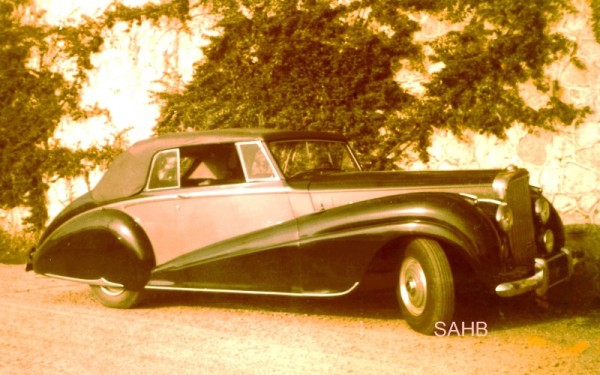
A somewhat exotic looking vehicle, particularly for the period in which it was produced when Britain was still enduring the age of austerity that had inevitably followed the end of the Second World War. To those who are not particularly familiar with motorcars such as this it would not be at all surprising if they assumed that the drophead coupé bodywork was by one of the French carrossiers because of its sweeping lines, the two colours of paint used, and particularly the appliqué chromed brightwork. It is therefore perhaps somewhat less than surprising that the original owner of this Bentley Mark VI was French and resident in central Paris.
When talking to this gentleman almost 50 years after he bought the car he expressed great regret at having parted with it after some twenty years of ownership, even though this was done for the best possible reasons – a vehicle of this size had become totally unsuitable for coping with the cut and thrust of city traffic, coupled with his own advancing years.
The bodywork was actually made by the London coachbuilders Park Ward, a business that had been founded in 1919 and in the 1930s became not only the major provider of bodies on Derby Bentleys but also developed an ‘all steel’ method of construction which did away with the traditional wooden body framing. This led to a degree of standardisation with bodies being built in batches but it did not significantly reduce innovative styling designs. The firm became a subsidiary of Rolls-Royce in 1939 and after the war continued as a maker of bespoke bodies on models of both marques.
The Mark VI had been introduced in 1946 and featured a tuned version of the 6-cylinder 4¼-litre engined as used in standard form in the Rolls-Royce Silver Wraith. Considering that in 1952 the car cost more than ten times the price of a basic Morris Minor, the fact that 5,201 of these Bentleys found customers, even if this was over a production period of around nine years, suggests that by this time things must have been getting better – at least for some people.






